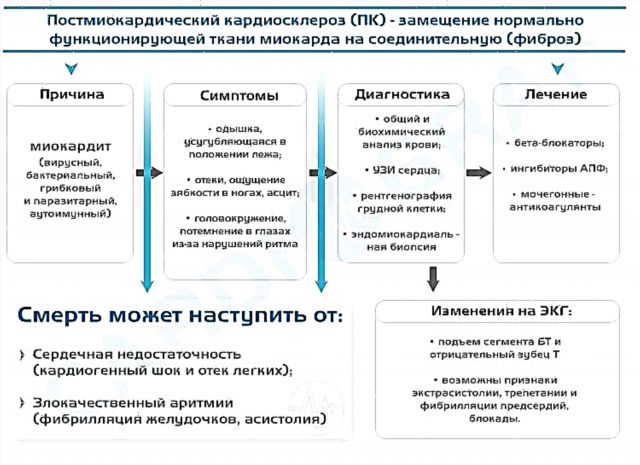Inflammation of the paranasal sinuses (sinusitis) is a commonly diagnosed condition that also occurs in pregnant women. As a rule, the pathological process during this period appears against the background of untreated rhinitis (runny nose), influenza, ARVI and some other infectious diseases. In addition, hormonal changes in the body during gestation contribute to the appearance of the disease. Sinusitis treatment during pregnancy has its own characteristics. In this case, the doctor needs not only to remove the inflammation and eliminate the infectious focus, but at the same time not to harm the unborn child.
Types, forms and severity of sinusitis
The classification of this ailment is based on the place of occurrence of the inflammatory process. Depending on the location of the infection, sinusitis is of the following types:
 Ethmoiditis - the sinuses of the ethmoid bone are affected.
Ethmoiditis - the sinuses of the ethmoid bone are affected.- Sphenoiditis - inflammation concentrates in the sinuses of the sphenoid bone.
- Sinusitis - an infectious focus is localized in the maxillary sinuses.
- Frontitis is a pathology of the frontal sinuses of the nose.
- Polysinusitis is an inflammatory process that covers several sinuses.
- Pansinusitis is a simultaneous inflammation of all paranasal sinuses.
If we talk about the form of sinusitis, then it is determined by the duration of the disease. Acute sinusitis is diagnosed when the patient is worried about the disease for no more than 3 months.
The chronic form (recurrent) assumes the lack of expression of symptoms with their periodic exacerbation and abatement during the period of remission.
In addition, sinusitis is classified by severity. A mild degree is not accompanied by an increase in body temperature, and it does not cause particularly strong discomfort (but even it can pose a danger to the expectant mother and child). Sinusitis of moderate severity is often accompanied by low-grade fever (no more than 39 degrees). Pain sensations are localized in the area of the affected paranasal sinuses.
As for the severe degree of the disease, then with it you can find characteristic signs of intoxication of the body. This is due to the poisoning of the patient with the waste products of pathogenic microflora. Purulent nasal discharge appears, the body temperature rises rapidly to 39 degrees.
Causes and characteristic symptoms of the disease
It is necessary to treat sinusitis in expectant mothers very carefully, having previously established the key cause of its appearance. Most often, sinusitis is provoked by infectious diseases, including ailments caused by viruses. Pathogenic organisms concentrate within one or more sinuses and begin to multiply actively. Thickening of the mucous membrane (swelling) occurs.
 Sinusitis is often due to lingering rhinitis (runny nose). The mucus is not excreted from the body, and the sinuses gradually begin to become inflamed. The pathological process is aggravated by a bacterial infection. Basically, during pregnancy, doctors diagnose frontal sinuses (damage to the frontal sinuses of the nose) and sinusitis (the maxillary sinuses become inflamed).
Sinusitis is often due to lingering rhinitis (runny nose). The mucus is not excreted from the body, and the sinuses gradually begin to become inflamed. The pathological process is aggravated by a bacterial infection. Basically, during pregnancy, doctors diagnose frontal sinuses (damage to the frontal sinuses of the nose) and sinusitis (the maxillary sinuses become inflamed).
There are a number of factors that increase your risk of sinusitis:
- adenoids;
- polyps;
- already existing foci of staphylococci;
- allergic rhinitis;
- facial trauma;
- curvature of the nasal septum;
- ineffective work of the immune system;
- caries and other diseases of the upper teeth;
- deformation of the nasal passages and so on.
Treatment of sinusitis in pregnant women should be started immediately after identifying its characteristic symptoms. What are the manifestations of such a disease? First of all, it should be noted the presence of a runny nose, which does not go away for a long time (more than two weeks).
In addition, it is worth suspecting something amiss with abundant mucous discharge from the nose. Often, a bacterial infection provokes the appearance of purulent foci.
Frontitis is accompanied by intense pain in the region of the bridge of the nose and between the eyebrows. With sinusitis, pain is concentrated in the area near the nasal wings. Sphenoiditis is accompanied by discomfort in the crown and occiput. Ethmoiditis is a type of sinusitis in which pain is localized in the bridge of the nose.
In addition to the above symptoms, an increased temperature (up to 39 degrees) and signs of intoxication of the body (general weakness) should be noted. The acuity of hearing and smell decreases (in some cases, vision may deteriorate). Acute attacks of dry cough appear, which intensify at night.
Diagnostics and treatment
 Please note that X-ray examination cannot be carried out until the 13th week of pregnancy. Sinusitis is diagnosed based on its clinical manifestations. To check the patency of the nasal canals, rhinoscopy is used. In addition, the attending physician performs palpation (feeling) of painful areas on the face in the area of the affected sinuses.
Please note that X-ray examination cannot be carried out until the 13th week of pregnancy. Sinusitis is diagnosed based on its clinical manifestations. To check the patency of the nasal canals, rhinoscopy is used. In addition, the attending physician performs palpation (feeling) of painful areas on the face in the area of the affected sinuses.- With regard to treatment, in this case, therapeutic methods are selected taking into account the general condition of the patient, the duration of pregnancy, as well as the identified form and severity of sinusitis. To improve well-being, antipyretic drugs are prescribed. The nasal mucosa is treated with locally moisturizing agents and vasoconstrictor drugs.
- Decongestants should be used carefully and only after consulting a doctor. The fact is that such drugs can cause vasoconstriction in the placenta and uterus. As a result, placental circulation will be impaired.
- In some cases, rinsing of the nasal cavity is prescribed with antiseptic or herbal solutions.
- To eliminate purulent foci, antibacterial drugs are prescribed, which are selected individually (this can be Sumamed or Amoxiclav).
- In especially severe and neglected cases, a puncture is performed - a puncture of the sinus. This procedure allows you to quickly remove the accumulation of pus from the sinus. After that, special drugs are injected into its cavity to relieve inflammation and swelling.
- Regardless of the therapy, the expectant mother needs a strict bed rest. It is necessary to provide adequate nutrition and regularly carry out wet cleaning of the room. It is better for women during pregnancy to treat sinusitis at the very beginning of the development of the disease. Thus, it will be possible to reduce the total amount of drugs used, as well as to exclude dangerous complications.
Don't forget about prevention
Like any other ailment, sinusitis is always easier to prevent than to cure later. To prevent inflammation of the paranasal sinuses, doctors recommend not  interrupt the treatment of infectious diseases. It should start on time and only after consulting a specialist. If possible, hypothermia should be completely eliminated, contact with allergens should be minimized, and oral care should be regularly performed (sanitation).
interrupt the treatment of infectious diseases. It should start on time and only after consulting a specialist. If possible, hypothermia should be completely eliminated, contact with allergens should be minimized, and oral care should be regularly performed (sanitation).
Pregnancy is a wonderful period in a woman's life. But this is also a very important time when you need to protect yourself and your unborn child from all possible diseases. Sinusitis is far from a harmless disease, as many think. Despite the seeming simplicity of treatment, it can lead to serious complications.
We advise you to always dress for the weather and minimize the consumption of cold drinks. Ventilate living rooms regularly, monitor the humidity level in the room (it should not be less than 50-60 percent).
Do not self-medicate. At the first symptoms of sinusitis, see your doctor immediately. Only he is able to accurately establish the diagnosis and choose the optimal rehabilitation course, taking into account all age and individual characteristics.

 Ethmoiditis - the sinuses of the ethmoid bone are affected.
Ethmoiditis - the sinuses of the ethmoid bone are affected. Please note that X-ray examination cannot be carried out until the 13th week of pregnancy. Sinusitis is diagnosed based on its clinical manifestations. To check the patency of the nasal canals, rhinoscopy is used. In addition, the attending physician performs palpation (feeling) of painful areas on the face in the area of the affected sinuses.
Please note that X-ray examination cannot be carried out until the 13th week of pregnancy. Sinusitis is diagnosed based on its clinical manifestations. To check the patency of the nasal canals, rhinoscopy is used. In addition, the attending physician performs palpation (feeling) of painful areas on the face in the area of the affected sinuses.

